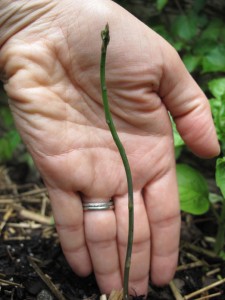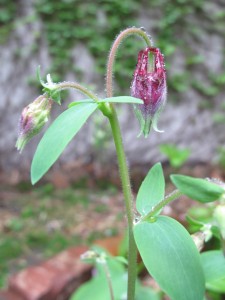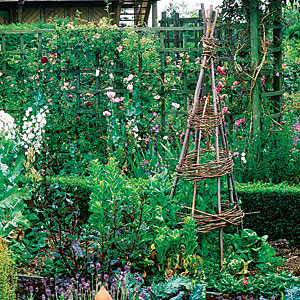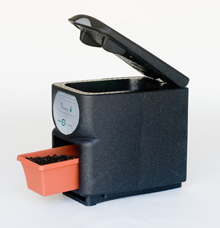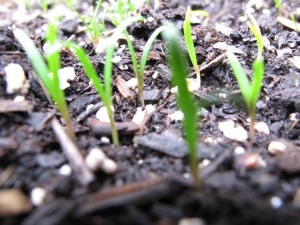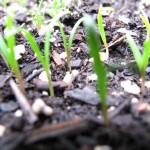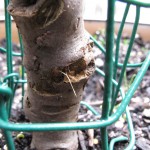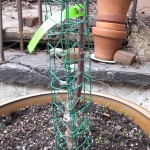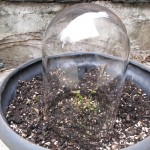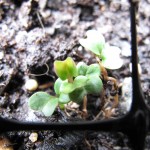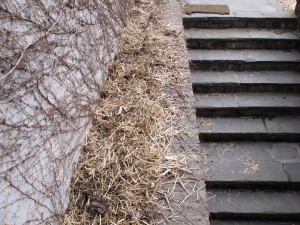The soil in my backyard has always been disappointing to me. I don’t think I could ever produce enough compost to turn this dust-like soil into a beautiful loamy soil. Most soil in Brooklyn is considered sandy. When it rains, the water runs through the sandy soil very quickly. It drains a little too soon, which means that the soil is often quite dry. Sounded like my soil, so I thought that’s what I had.
Then I took the Water Garden class at the Brooklyn Botanic Gardens and the teacher mentioned different soil types: sandy, clay, silt (the ideal) and rubble. Wait a second! What? Back before people were a little more enlightened, they used to just tear down a building and leave the rubble behind. They would throw some soil on top, and voila, their problem was buried. I mentioned to the teacher that I’ve been picking bits of broken glass and tile out of my soil for the past 15+ years. Every time it rains, there are little sparkly bits that have surfaced. Well, guess what? Turns out I have sandy, rubbly soil. Wonderful. More reason to keep composting.
So now that I’m trying to raise more veggies than flowers, I’ve been thinking about how safe my soil is. Do I have a lot of lead or other heavy metals in my soil? I sent a soil sample to Cornell Nutrient Analysis Lab to be tested. I’m having them test for general soil fertility and heavy metals. Here’s an article in the NY Times today that specifically mentions Brooklyn as having high levels of lead in the soil. My teacher at the Brooklyn Botanic Gardens said airborne lead is more of a problem than lead in the soil. I guess the urban plants have a good chance of getting the lead from either end.
The Times article says that fruiting crops such as tomatoes, squash, eggplant, corn and beans don’t accumulate lead as much as herbs, leafy greens and root vegetables. It also said that you can grow indian mustard and spinach for a few years as a way to leach lead out of the soil. Obviously you can’t eat those greens and they say you need to dispose of them as toxic waste. Yikes.
I think a very good solution is to have raised beds or containers. That is pretty much what I have. I have herbs in an area that has only composted soil. Everything else is pretty much in pots. I might add a raised bed in an area that gets a bit of sun to grow more greens than I’m able to at present. I’m enjoying the veggies so much that I’m crossing my fingers that my soil passes it’s test.

